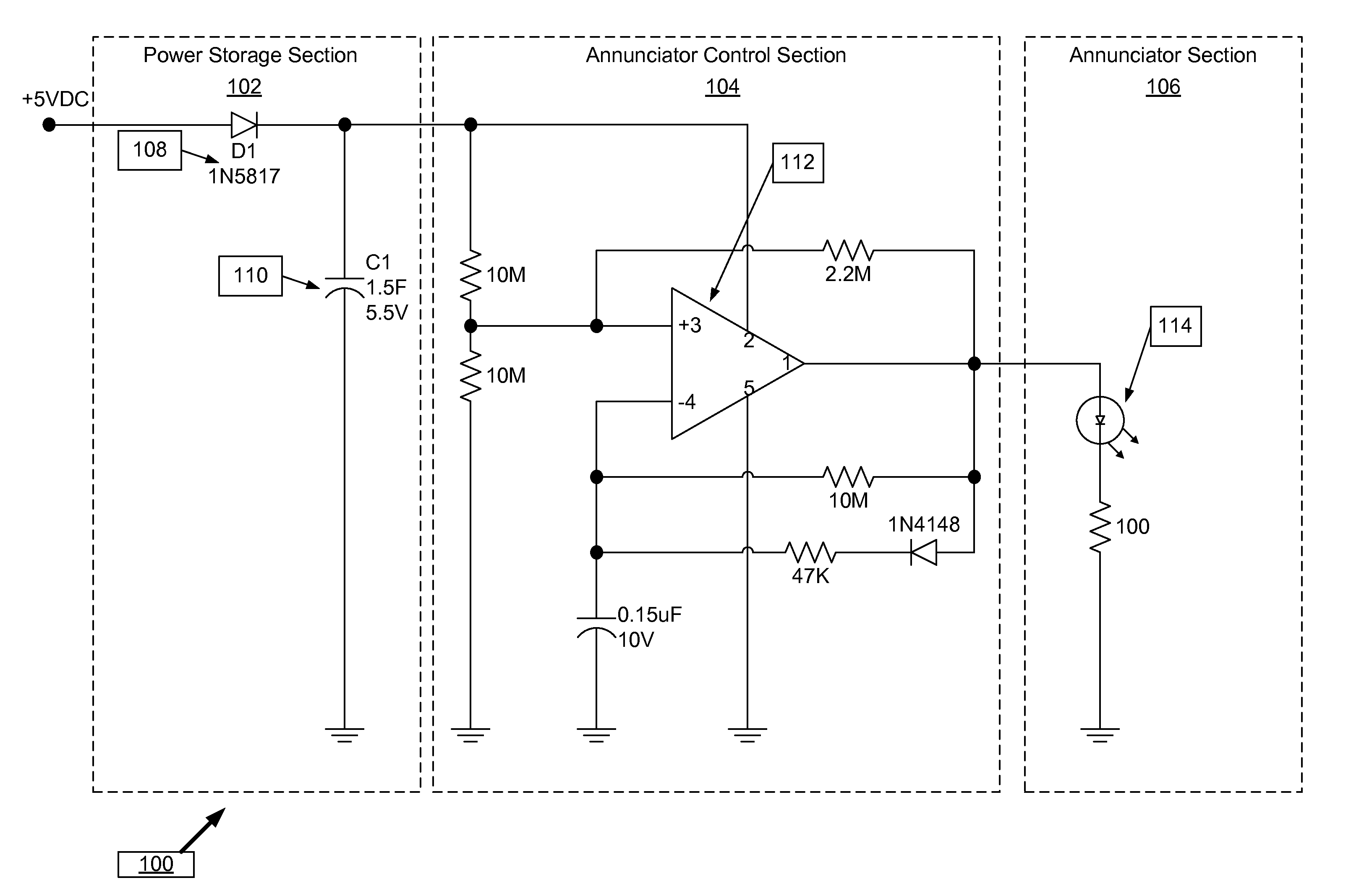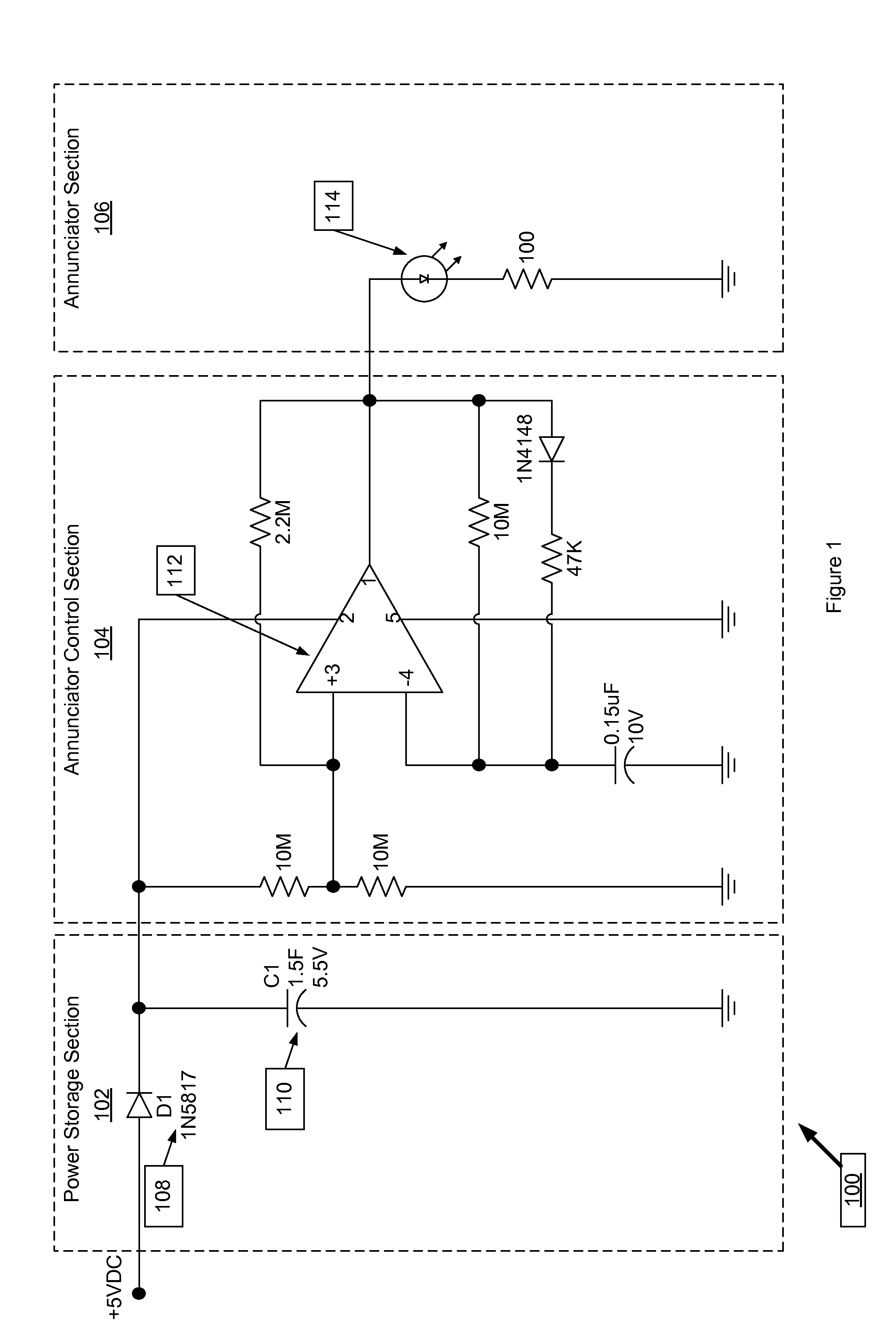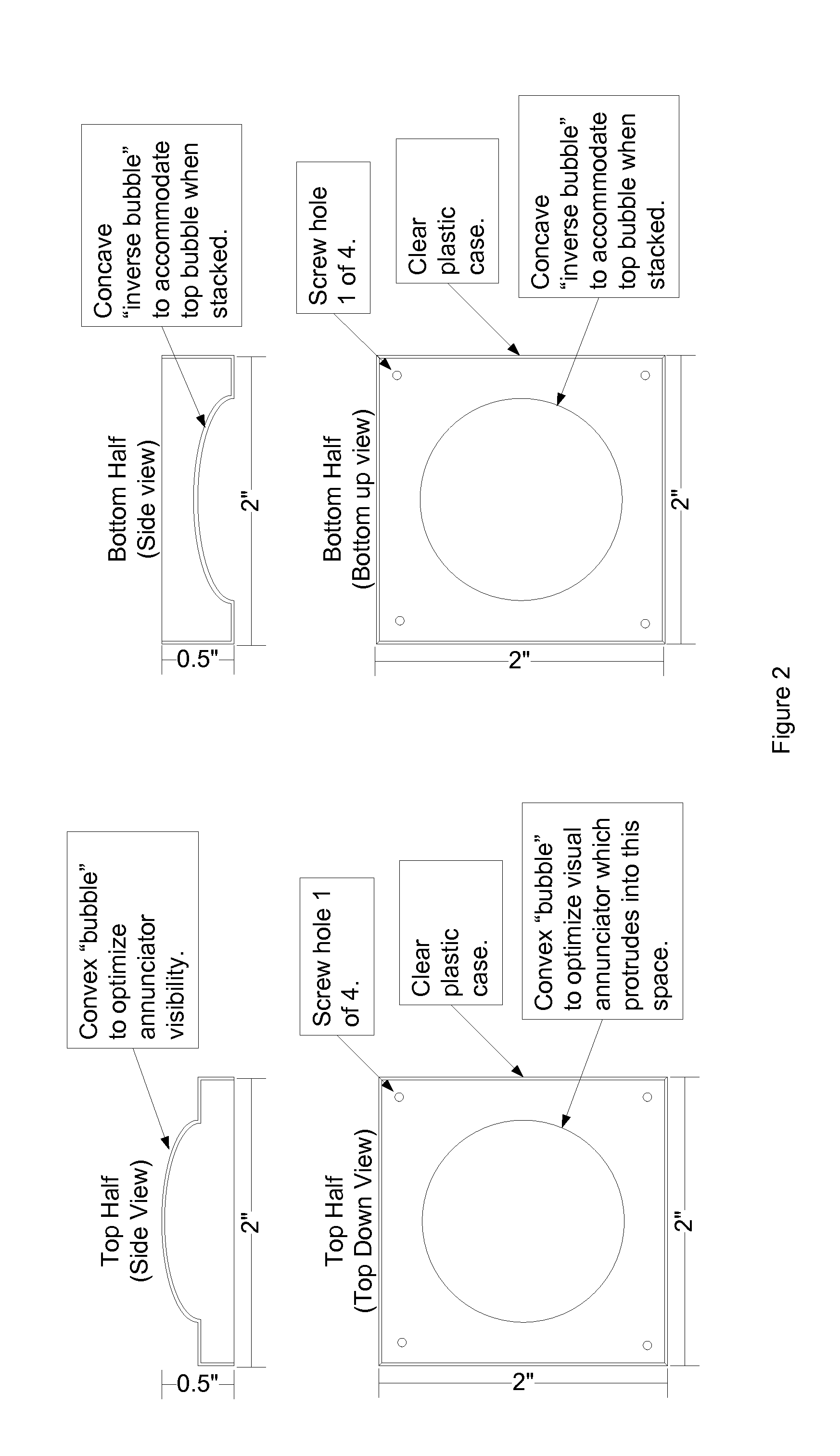[0008]The present invention provides a
system and method for marking and / or tracking the location of victims and items of interest, including marking points of danger, often associated with an emergency, a disaster, a
mass casualty incident, or other catastrophe. In particular, the invention pertains to systems and methods for marking and tracking locations utilizing portable devices that are transportable in vehicles operated by emergency responder personnel and rapidly charged to an operational state for immediate use in
emergency situations. The need for the invention is rooted in the experience of trained
search and rescue personnel. These personnel are called upon to enter unfamiliar structures or areas often under low light or other poor visibility conditions. As search personnel enter a structure or affected area and
traverse unfamiliar territory a trail of these devices can be left along their ingress path. This trail of annunciators would facilitate efficient egress to the safe zone and allow new personnel to efficiently ingress to the location of the original search personnel or marked points of interest.
[0010]In addition to
emergency situations, the invention may be used to help track location of individuals in remote areas or unfamiliar locations. For example, military or boy scouts or other individuals working on developing survival skills or just in participating in planned activities may use the marking devices. Also, rescuers searching for lost hikers or campers may use the invention to help mark search areas or locations of interest that may contribute to locating the lost individual. This may be particularly helpful in situations where there is a sudden and extreme environmental condition, e.g., sudden and intense snowfalls, rains / floods,
fog, etc.
[0016]Instead of traditional batteries, the present invention preferably employs annunciators with high-speed charging capacitors as the integrated power source. These relatively recently available devices are known as “super capacitors” and include nano-porous capacitors and have
shelf life, for example, that is 10-20 times greater than that of batteries. See http: / / en.wikipedia.org / wiki / Super_
capacitor, the content of which is hereby incorporated by reference, for a more detailed discussion of super capacitors. Typically, batteries have the further limitation that they are only capable of significantly fewer charges when compared with capacitors. While capacity to store charge is greater in batteries, this is not a key concern for the emergency devices of the present invention. The annunciators preferably use super capacitors that may be recharged in a fraction of the time that it takes standard batteries to charge. Preferably the annunciators can be plugged into any 12
volt power source, such as a car cigarette lighter, for rapid charge. In this manner, the responder may use the time it takes to drive to the site of an emergency to
plug in and completely charge the annunciator
system. Additionally, battery at same
voltage as a
capacitor has a greater capacity to deliver current than the
capacitor can charge /
discharge instantly. A key is to reduce the draw of current on charge of capacitor—control how rapidly charge is drawn from capacitor. Battery may be better for high power needs. For example, the annunciator capacitors can be charged in 10 seconds and can operate for 24 hours depending on the configuration of the on-board power source, efficiency,
duty cycle of the annunciator, and supporting circuitry. Flashing annunciators last longer or have a longer operational period between charges.
[0018]The annunciators use circuitry and components that are scalable. Due to the
scalability of the invention's circuits and components, device packaging can range from very small “electronic breadcrumbs” that could be used in multiples to indicate a path of ingress or egress to larger illuminated signage such as arrows, caution signs, and other meaningful icons. Additionally, lighter and smaller markers may be more useful to users who need storage space for other items. For example, military personnel who carry all of their gear on their backs need a lightweight and small annunciator.
 Login to View More
Login to View More  Login to View More
Login to View More 


